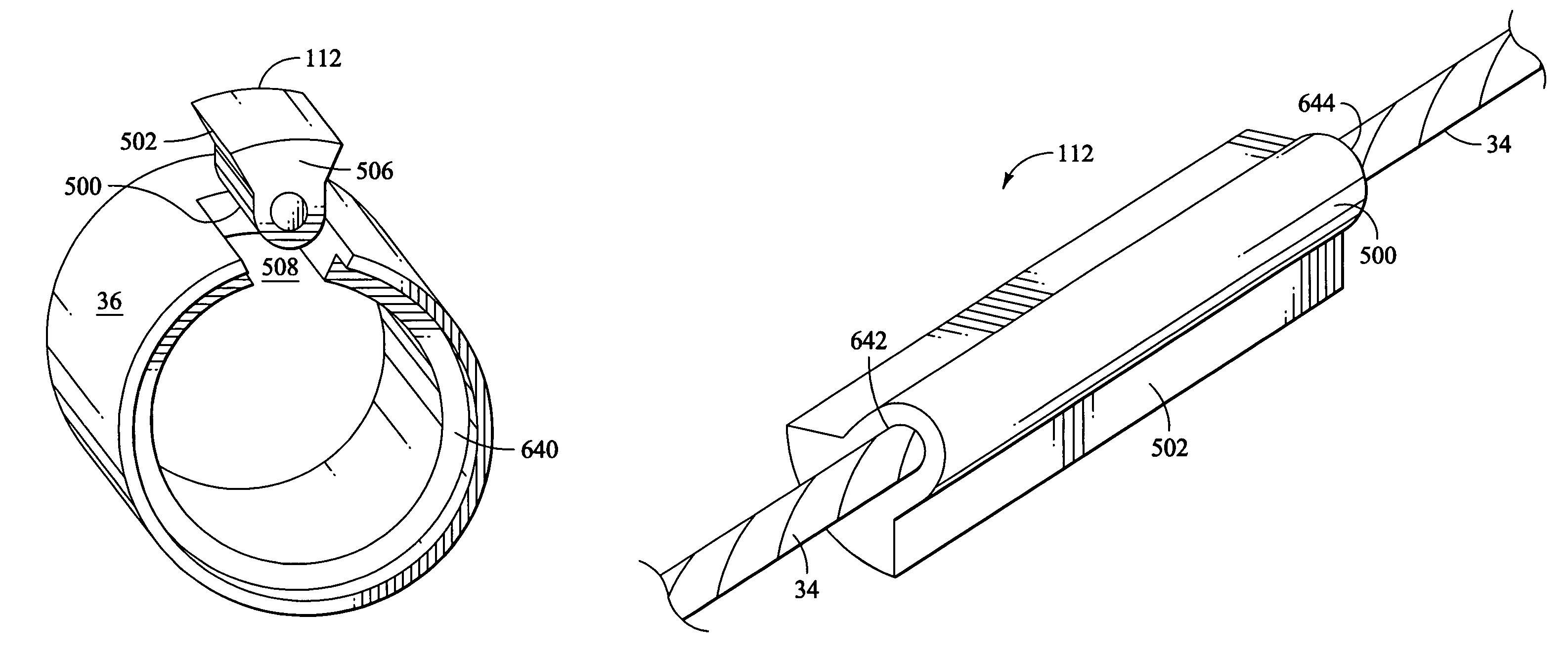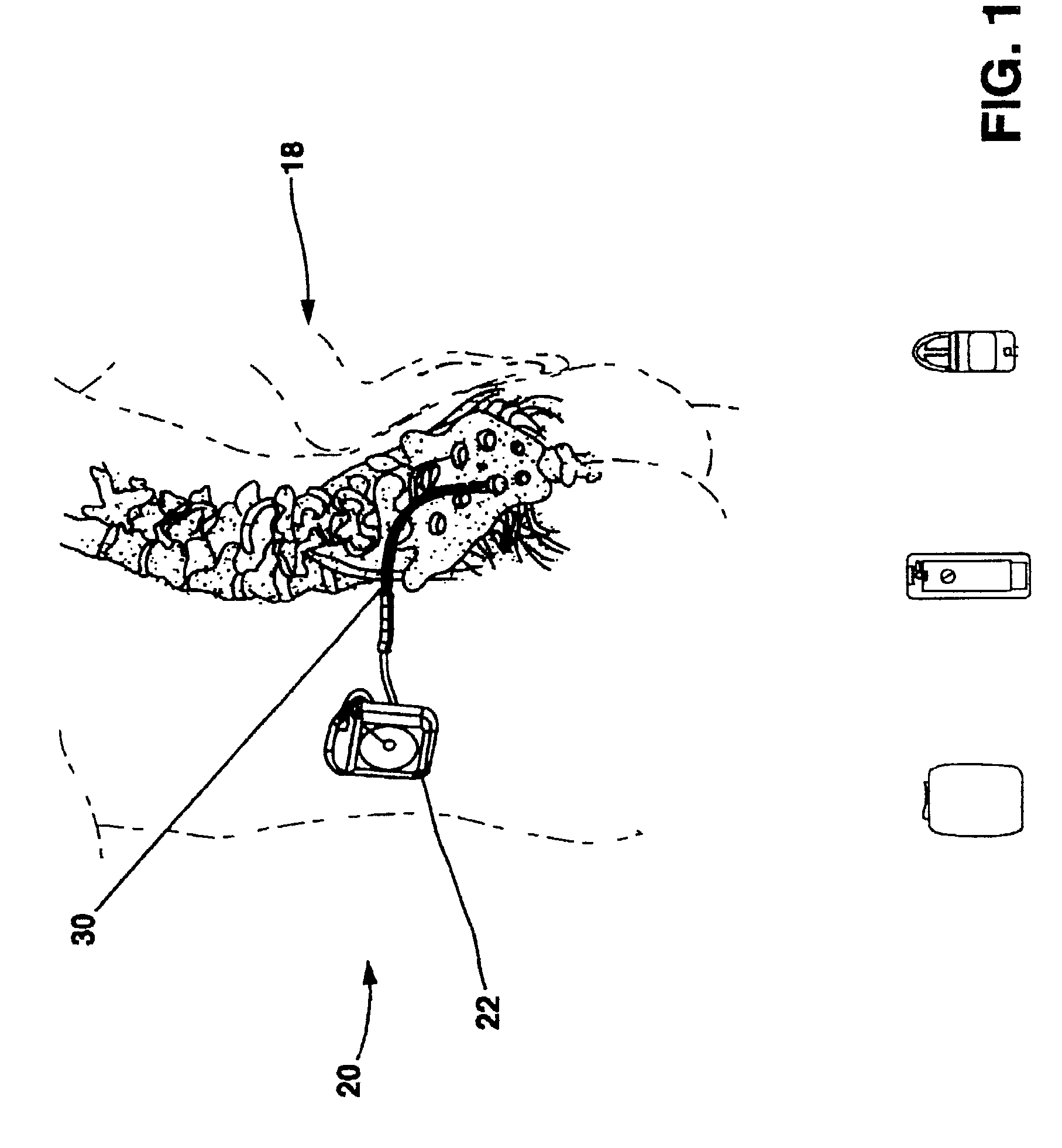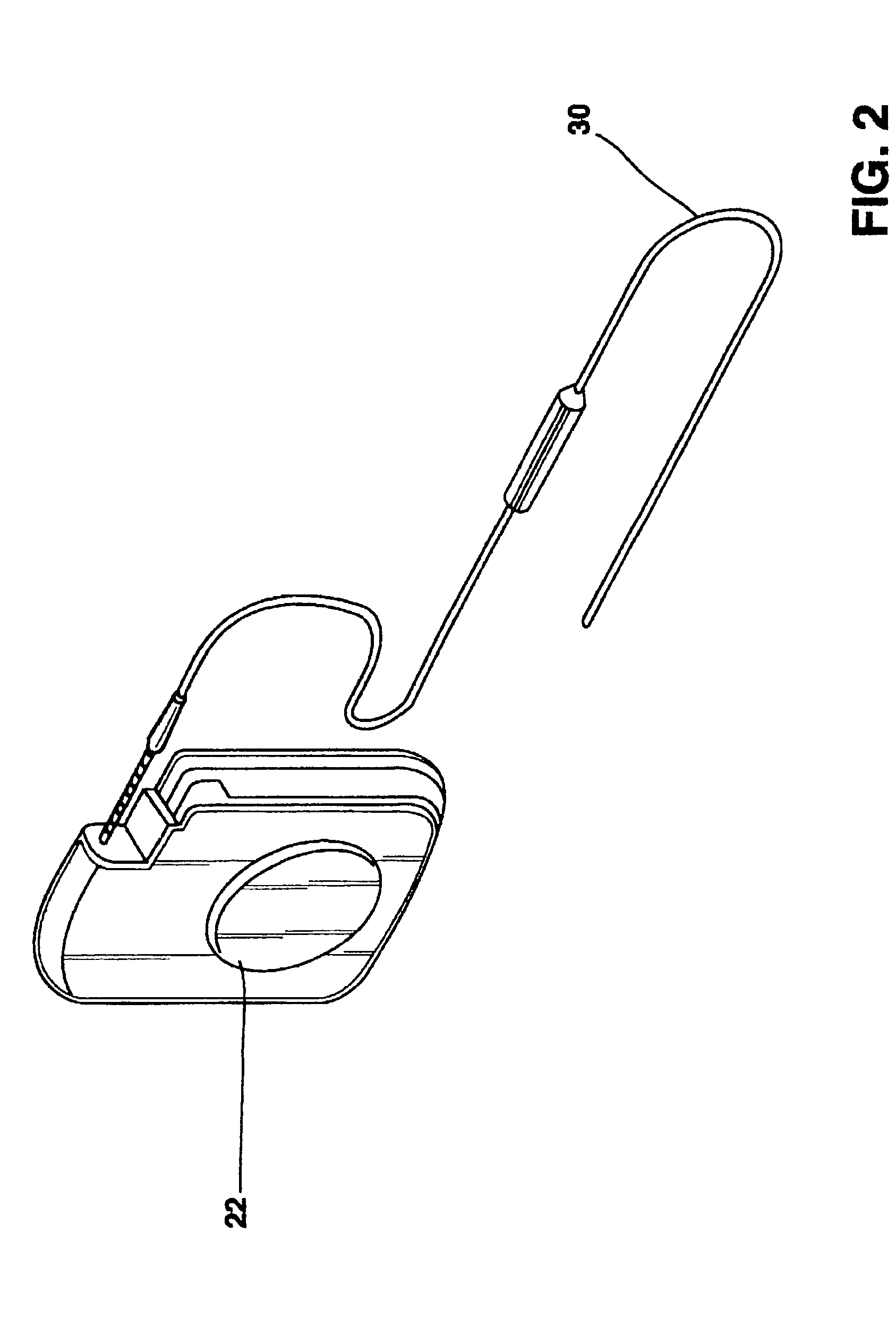Method for performing a coplanar connection between a conductor and a contact on an implantable lead
- Summary
- Abstract
- Description
- Claims
- Application Information
AI Technical Summary
Benefits of technology
Problems solved by technology
Method used
Image
Examples
Embodiment Construction
[0038]FIG. 1 shows a general environmental view of an implantable neurostimulation system embodiment and FIG. 2 shows a neurostimulation system embodiment. Neurostimulation systems are used to treat conditions such as pain, movement disorders, pelvic floor disorders, gastroparesis, and a wide variety of other medical conditions. The neurostimulation system 20 includes a neurostimulator 22 such as an Itrel II® Model 7424 or an Itrel 3® Model 7425 available from Medtronic, Inc. in Minneapolis, Minn., a stimulation lead extension 24, and a stimulation lead 30. The neurostimulator 22 is typically implanted subcutaneously in the patient's body 18 at a location selected by the clinician. The stimulation lead 30 is typically fixed in place near the location selected by the clinician using a device such as the adjustable anchor. The implantable lead 30 can be configured as a neurological stimulation lead, a neurological sensing lead, and a combination of both as a neurological stimulation a...
PUM
 Login to View More
Login to View More Abstract
Description
Claims
Application Information
 Login to View More
Login to View More - R&D
- Intellectual Property
- Life Sciences
- Materials
- Tech Scout
- Unparalleled Data Quality
- Higher Quality Content
- 60% Fewer Hallucinations
Browse by: Latest US Patents, China's latest patents, Technical Efficacy Thesaurus, Application Domain, Technology Topic, Popular Technical Reports.
© 2025 PatSnap. All rights reserved.Legal|Privacy policy|Modern Slavery Act Transparency Statement|Sitemap|About US| Contact US: help@patsnap.com



